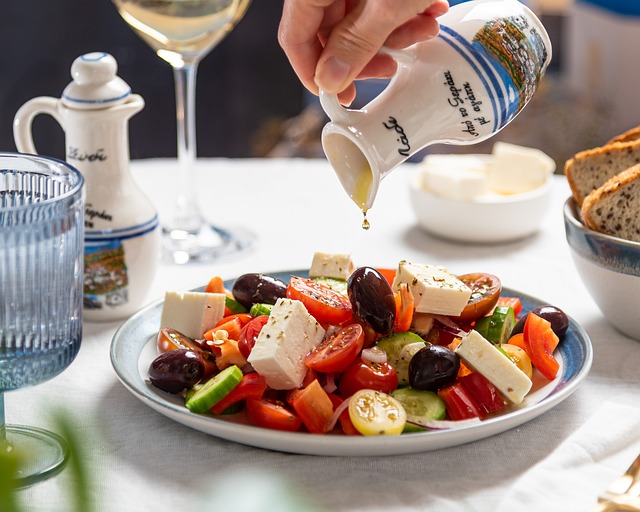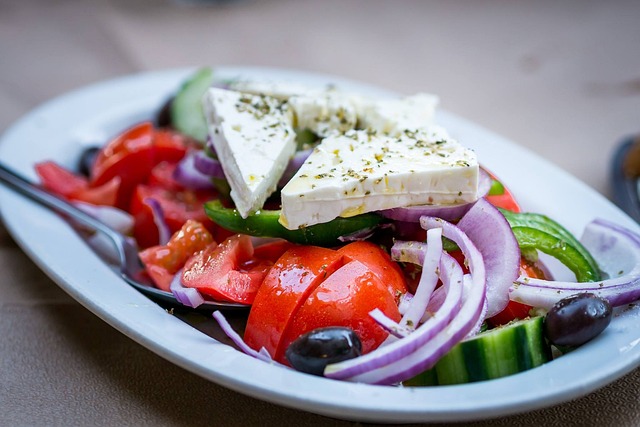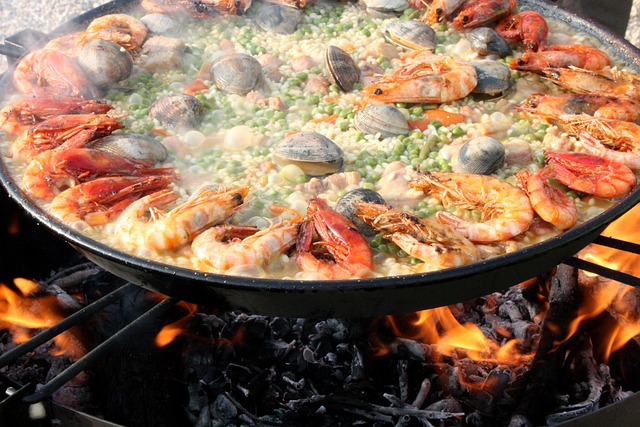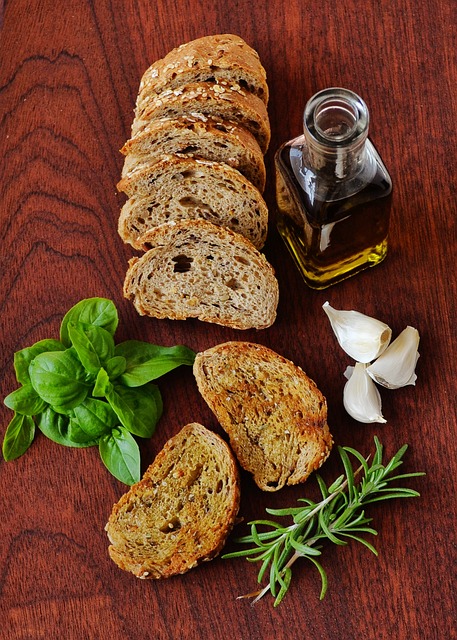
As the warm sun beats down on the shores of the Mediterranean Sea, it’s impossible not to revel in the diverse and alluring flavors that make up the region’s fabulous cuisine. From Spain’s tasty paella to Greece’s delightful tzatziki, Mediterranean cuisine is a harmonizing blend of fresh, vibrant ingredients that are both healthy and delicious.
The people of the Mediterranean have a unique and discerning palate, developed over centuries of enjoying the fresh produce of the region’s sun-drenched fields and gardens. The cuisine is characterized by the use of fresh herbs and spices, tangy citrus fruits, and succulent seafood. Nothing is more important to a Mediterranean cook than the use of high-quality, fresh ingredients. These are the building blocks for the delicious and satisfying dishes that people have been enjoying for generations.
One of the most exciting aspects of Mediterranean cuisine is the sheer variety of dishes you can enjoy. From the flavors of Italy’s rich tomato sauces and delicious pastas, to the spicy kick of Moroccan tagines, there’s something to delight every taste bud. Mediterranean food is elegant and refined, but still boasts plenty of bold and intense flavors that will keep you coming back for more.
What makes Mediterranean cuisine stand out from other great cuisines of the world is the way it embraces healthy eating. With an emphasis on fresh vegetables and lean proteins, Mediterranean cuisine is a smart choice for anyone who is looking to maintain a healthy lifestyle. From flavorful salads to grilled fish and meats, there’s always a delicious and nutritious option on the menu.
Key Ingredients in Mediterranean Cuisine
Olive Oil
Olive oil is the golden nectar of the Mediterranean kitchen. It is the essential ingredient in many Mediterranean dishes, and it is also used for cooking and salad dressings.
Varieties and flavors: There are many varieties of olive oil, and each has its own distinctive flavor profile. In general, the more robust the flavor, the better it is for cooking, while the milder oils are better for dressings.

Health benefits and culinary uses: Olive oil is packed with antioxidants and has been shown to reduce the risk of cardiovascular disease, lower cholesterol, and improve brain function. It is used in a wide range of Mediterranean dishes, from grilled vegetables and meat to pasta sauces and dips.
Fresh Produce and Herbs
Fresh produce and herbs are the foundation of Mediterranean cuisine. The region’s warm climate and fertile soils yield a bounty of fresh fruits, vegetables, and herbs all year round.
Varieties and flavors: The variety of fresh produce and herbs used in Mediterranean cuisine varies by region and season. Common examples include tomatoes, peppers, eggplant, zucchini, basil, oregano, and mint.
Health benefits and culinary uses: Fresh produce and herbs are packed with vitamins, minerals, and fiber, making them an essential component of a healthy Mediterranean diet. They are used in everything from salads and dips to soups and stews.
Grains and Legumes
Grains and legumes are a staple in the Mediterranean diet. They are a valuable source of complex carbohydrates, protein, and fiber.
Varieties and flavors: Popular grains and legumes in Mediterranean cuisine include couscous, bulgur, quinoa, chickpeas, lentils, and beans.
Health benefits and culinary uses: Grains and legumes are low in fat and high in fiber, making them an essential component of a healthy Mediterranean diet. They are used in a wide variety of dishes, from tabbouleh and hummus to soups and stews.
Seafood and Fish
The Mediterranean Sea is home to an abundant variety of fish and seafood, which are a key component of the region’s cuisine.
Varieties and flavors: Popular fish in Mediterranean cuisine include sardines, anchovies, tuna, and salmon, while seafood like squid, octopus, and mussels are also popular.

Health benefits and culinary uses: Fish and seafood are a rich source of protein, omega-3 fatty acids, and other beneficial nutrients. They are a healthy alternative to meat and are used in a wide range of dishes, from grilled fish to seafood pasta.
Classic Mediterranean Dishes
Greek Cuisine
Moussaka
Moussaka is a layered casserole dish with eggplant, ground meat (usually lamb), and a creamy bechamel sauce. Moussaka is a popular Greek dish that is often served as a main course. The eggplant gives it a unique texture and flavor, while the bechamel sauce adds creaminess and richness to the dish.
Key ingredients and flavors: eggplant, lamb, tomato sauce, cinnamon, nutmeg, and bechamel sauce.
Examples: Traditional Greek moussaka, vegetarian moussaka with lentils or mushrooms.
Greek Salad
A refreshing and simple salad that is a staple in Greek cuisine. The combination of fresh and tangy flavors makes Greek salad an iconic dish. It is often served as a side dish or a light meal during hot summer days.

Key ingredients and flavors: tomatoes, cucumbers, red onion, feta cheese, olive oil, and oregano.
Examples: Traditional Greek salad, variations with olives, capers, or lettuce.
Italian Cuisine
Spaghetti alla Carbonara
A classic pasta dish originating from Rome. Spaghetti alla Carbonara is a simple yet flavorful dish that is loved by many. The salty pancetta or bacon pairs perfectly with the creamy egg sauce, creating a comforting and satisfying dish.
Key ingredients and flavors: spaghetti, eggs, pancetta or bacon, Pecorino Romano cheese, black pepper.
Examples: Traditional spaghetti alla carbonara, variations with mushrooms, peas, or cream.
Margherita Pizza
A classic pizza from Naples, made with simple and fresh ingredients. The Margherita pizza is a true representation of Italian cuisine. The combination of fresh tomato sauce, creamy cheese, and fragrant basil creates a perfect balance of flavors.

Key ingredients and flavors: pizza dough, San Marzano tomatoes, mozzarella di bufala, basil, olive oil.
Examples: Traditional Margherita pizza, variations with prosciutto, arugula, or mushrooms.
Spanish Cuisine
Croquetas
Fried dough balls filled with various ingredients, such as ham, cheese, or vegetables. Croquetas are a popular tapa dish in Spain. The crispy exterior and creamy filling create a satisfying and addictive texture. They are often served as a snack with a cold beer or a glass of wine.
Key ingredients and flavors: flour, milk, butter, fillings of choice (ham, cheese, mushrooms, etc.), bread crumbs.
Examples: Traditional ham and cheese croquetas, variations with spinach, chorizo, or seafood.
Paella
A rice dish that originated in the Valencia region of Spain. Paella is a flavorful and colorful dish that is perfect for sharing with friends and family. The saffron-infused rice absorbs all the flavors of the seafood or meat, creating a satisfying and aromatic dish.
Key ingredients and flavors: short-grain rice, saffron, chicken or seafood, bell peppers, tomatoes.
Examples: Traditional seafood paella, variations with chicken, rabbit, or vegetables.

Middle Eastern Cuisine
Hummus
A dip made from chickpeas, tahini, lemon juice, and garlic. Hummus is a staple in Middle Eastern cuisine. The creamy and tangy dip is perfect for dipping pita bread or vegetables. It is also a healthy and nutritious snack or appetizer.
Key ingredients and flavors: chickpeas, tahini, lemon juice, garlic, olive oil.
Examples: Traditional hummus, variations with roasted red peppers, sun-dried tomatoes, or parsley.
Shawarma
A Middle Eastern wrap or sandwich filled with marinated meat, vegetables, and sauces. Shawarma is a popular street food in the Middle East. The tender and flavorful meat, combined with the fresh vegetables and creamy sauces, create a satisfying and delicious wrap or sandwich.
Key ingredients and flavors: marinated meat (chicken, lamb, or beef), vegetables (lettuce, tomatoes, onions), yogurt sauce, tahini sauce, pickles.
Examples: Traditional shawarma, variations with falafel, hummus, or tabbouleh.

Mediterranean Flavor Profiles and Seasonings
Citrus Fruits
The Mediterranean region is known for its abundant citrus fruit orchards, which are heavily used in cooking for their tangy and bright flavors. The most commonly used citrus fruits in Mediterranean cuisine include:
Lemon: Used in everything from marinades to salad dressings, the tart and acidic flavor of lemons adds a zing to any dish.
Orange: In addition to its use as a sweet dessert ingredient, oranges are also used to add a citrusy flavor to savory dishes, such as roasted meats or stews.
Grapefruit: Although not as commonly used as lemons or oranges, grapefruit is still used in Mediterranean cuisine for its refreshing and slightly bitter taste.
Mediterranean Spices and Condiments
Mediterranean cuisine is also known for its use of aromatic spices and condiments that add depth and complexity to dishes. Some of the most commonly used spices and condiments include:
Cumin: With its nutty and warm flavor, cumin is frequently used in Moroccan and Middle Eastern cuisine to add depth and complexity to dishes.
Sumac: This tangy and bright red spice is used in dips, marinades, and salad dressings to add a sour and slightly fruity flavor.
Harissa: This fiery red paste made from chili peppers, garlic, and spices is used to add heat and intense flavor to dishes.
Mediterranean Herbs
Fresh and flavorful herbs are a cornerstone of Mediterranean cuisine, used to add brightness and freshness to dishes. Some of the most commonly used herbs include:

Basil: A fragrant and versatile herb that is used in everything from salads to pesto sauce.
Oregano: A pungent and earthy herb that is a staple in Greek and Italian cuisine, used in dishes ranging from pizza to grilled lamb.
Rosemary: A bold and resinous herb that is often used with roasted meats, vegetables, and potatoes to add a woodsy and savory flavor.
Incorporating Mediterranean Flavors in Everyday Cooking
Incorporating Mediterranean flavors into everyday cooking can be a fun and exciting way to add variety and health benefits to your meals. Here are some tips to help you get started:
1. Stock up on pantry staples: Keep items like olive oil, lemons, garlic, capers, and olives on hand so that you can easily add a touch of Mediterranean flavor to any dish.
2. Use fresh herbs and spices: Fresh herbs like basil, oregano, and thyme add a burst of flavor to dishes, and spices like cumin, coriander, and paprika can add depth and warmth. Don’t be afraid to experiment with new flavors!
3. Focus on fresh produce: Emphasize fresh vegetables like tomatoes, peppers, eggplants, and zucchinis, and use them in salads, roasts, and grilled dishes. Legumes like chickpeas and lentils are also a great way to add protein and fiber to meals.
4. Incorporate seafood: Seafood is a cornerstone of Mediterranean cuisine, and adding fish and shellfish to your meals can provide a healthy dose of omega-3 fatty acids. Try grilled fish, shrimp skewers, or a classic seafood paella.
5. Experiment with dishes from different Mediterranean regions: Each country in the Mediterranean has its own unique cuisine, so trying out dishes from Greece, Italy, Spain, and Morocco can expose you to a variety of flavors and techniques.
Mediterranean cuisine is a celebration of the flavors and ingredients that thrive in the region’s sun-soaked landscapes. With its emphasis on fresh produce, lean proteins, and aromatic spices, it is a culinary journey that is both healthy and delicious. From the zesty herb-infused dishes of Italy to the fiery heat of Morocco’s tagines, there is no shortage of vibrant and enticing flavors to explore. Whether you’re a seasoned chef or simply looking to enrich your diet with new flavors and dishes, the world of Mediterranean cuisine is waiting to be discovered. So let yourself be transported to the shores of the Mediterranean and unravel the magic of these bold and tantalizing flavors.
